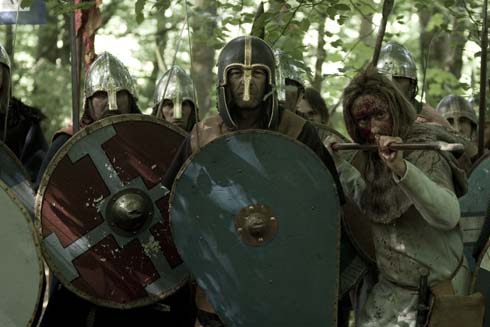The first thing that strikes you when you click on to Georg Gerster’s website is the following quote: “Height provides an overview. And an overview facilitates insight, while insight generates consideration – perhaps.”
Georg Gerster says this conviction is “both the premise and the result of” his work as a journalist and aerial photographer. And he should know. By following this line of reasoning, Gerster took aerial photography and progressed it, transformed it, challenged it, pushed it to its limits. He took a scientific and artistic pursuit and combined the two to create something that transcended photography or science; his work was, he says, “something more probing, something that, with luck, may prove a contemplative, philosophical instrument encouraging greater reflection”.
And it did, because his use of aerial photography paved the way for us all to view our surrounds from a different perspective, one usually reserved for pilots and frequent flyers, albeit from much greater heights. While we stood and looked up at the world’s great sites or wandered among their ruins, Gerster chose to fly above them to see them from a different perspective, and to photograph what he saw; most importantly, he chose to share.
It’s this decision to share his photos and to distribute his work on a global scale that sets him apart from many of the aerial photographers who came before him. Before Gerster, pioneers of aerial photography were mostly military men or archaeologists who had seen the future and realised what a vital role aerial imagery could play in research. Gerster knew this too, but he also knew the power of images and their ability to influence and change both people and the world.
A Shooting Star
Over the past 40 years, Gerster has amassed a body of work unmatched by any other aerial photographer; though they might try. He has shot the Earth from above 111 countries on six continents, with his best work arguably that which concentrates on archaeological and other heritage sites. It is this body of work that is showcased in The Past From Above.
Gerster’s background as the science editor at Zurich Weltwochewas ideal training for a career that would take him to the junction of science and art. After six years at Zurich Weltwoche, he became a freelance science journalist and aerial photographer. That was in 1956; Gerster – who is 82 this year – has been freelance ever since, and still shoots for National Geographic, among others.
The Past from Above is an epic compilation that features some 250-odd photos from more than 50 countries. The book opens with an introductory chapter on the use of aerial photography in archaeology by editor, Charlotte Trumpler, head of the Archaeological Collection at Germany’s Ruhrlandmuseum and Folkwang Museum.
In it, Trumpler traces the origins of aerial photography from some 50 years before P.H. Sharpe’s 1906 shot of Stonehenge found fame as the first published aerial image. Kites, balloons, aeroplanes – they’re all covered off en route to crediting German archaeologist Theodor Wiegand as the being the first photographer to realise the potential of aerial photography as an archaeological tool. The military photographs taken by pilots on Wiegand’s instruction during World War I would become the earliest images we have from the air of the theatre at Bosra, the Pyramids of Giza, and other important sites.
After Trumpler’s excellent backgrounder, Gerster offers selected memories and personal insights from various shoots in locations across the world. He highlights some of the challenges aerial photographers face and is, as ever, as philosophical as his images inspire his audiences to be.
The book is then broken down into 12 chapters – eg Archaeological Sites in the Landscape; Sacred Sites; Monumental Geoglyphs, etc. Images are presented either across double page spreads or one image per page, with a basic caption cross-referenced with a thumbnail index at the end of the chapter. Here, Trumpler provides an overview of the site featured in each photograph. The only book that comes close to cataloguing so many archaeological sites – and so methodically – would be UNESCO’s book of World Heritage Sites.
Karnak, the Acropolis, Leptis Magna, Aleppo, Pont du Gard, Segovia’s aqueduct – they’re all here, the famous and slightly less famous, the obscure and slightly more obscure. And then some. And then some more. Remarkable images of remarkable places.
A final bonus chapter entitled ‘Pharaoh is Moving’ chronicles the extraordinary relocation of the temples of Abu Simbel. What would you give to have been there, watching, as Ramesses was taken to bits and shipped out to make way for the waters of the Aswan High Dam? Gerster was there, as always, camera in hand. His wonderful images complemented by a vignette of the politics and logistics involved in the UNESCO-backed project. It’s as close to being there as we were ever likely to get.




